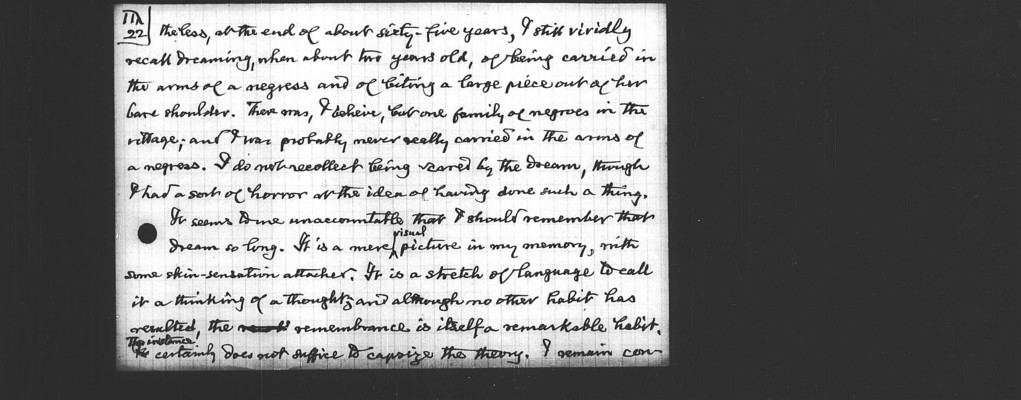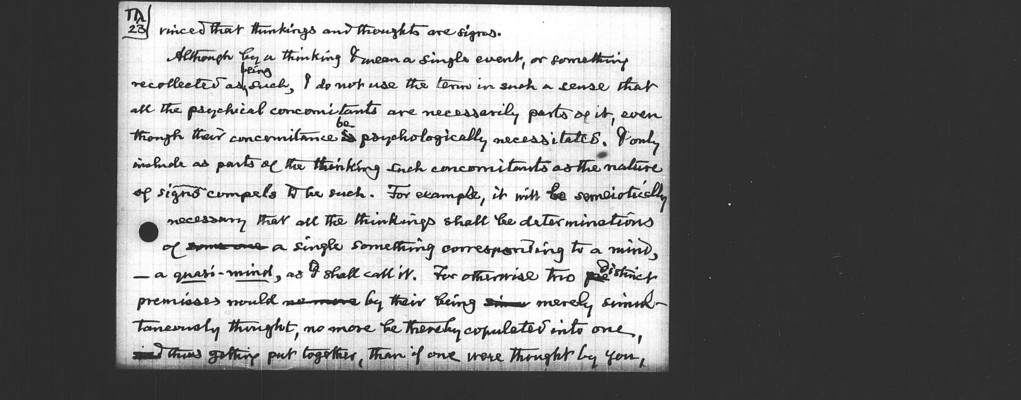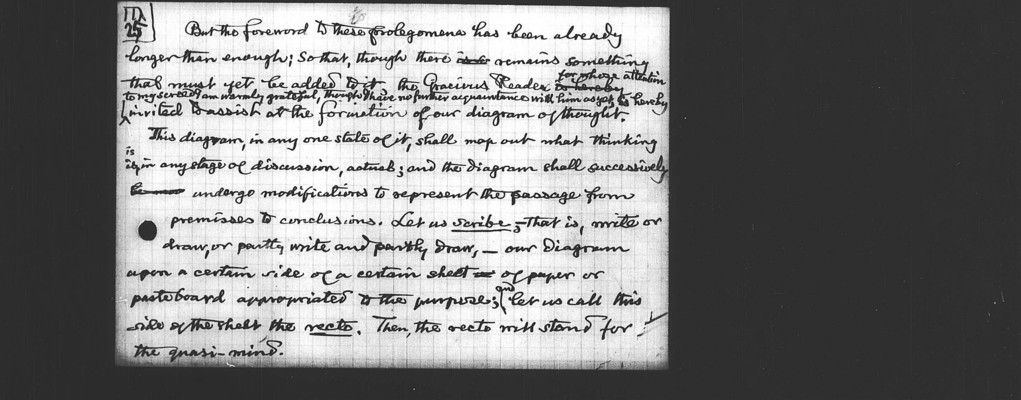Pages
21
πλ 21
its very first incipience is cut off by sudden death? I am far from saying that it is nothing at all: it is a would-have-been the reality of which a sound logic cannot deny. But a habit being, in any case, only a would-be, a would-have-been would-be is is one the verge of not being at all. If anybody could only adduce a single unmistakable case of thinking a thought without any habit or other consequence, actual or potential, that would suffice to explode my theory that thought and thinking are essentially signs. But I, for my part, can produce no better instance of such a phenomenon than the following: It is not on the average, as often as twice a year that I (unless in grave illness) retain the slightest vestige of recollection of any dream sixty seconds after waking; for I wake up promptly. Never
22
πλ 22
theless, at the end of about sixty-five years, I still vividly recall dreaming, when about two years old, of being carried in the arms of a negress and of biting a large piece out of her bare shoulder. There was, I believe, but one family of negroes in the village; and I was probably never really carried in the arms of a negress. I do not recollect being scared by the dream, though I had a sort of horror at the idea of having done such a thing. It seems to me unaccountable that I should remember that dream so long. It is a mere visual picture in my memory, with some skin-sensation attached. It is a stretch of language to call it a thinking of a thought; and although no other habit has resulted, the remembrance is itself a remarkable habit. The instance certainly does not suffice to capsize the theory. I remain con
23
πλ 23
vinced that thinkings and thoughts are signs.
Although by a thinking I mean a simple event, or something recollected as being such, I do not use the term in such a sense that all the psychical concomitants are necessarily parts of it, even though their concomitance be psychologically necessitates. I only [inshole?] as parts of the thinking such concomitants as the nature of signs compels to be such. For example, it wil be semiotically necessary that all the thinkings shall be determinations of a single smething corresponding to a mind, ---a quasi-mind, as I shall call it. For otherwise, two distinct premisses would by their being merely simultaneously thought, no more be thereby copulated into one, thus getting put together, than if one were thought by you,
24
πλ 24
indulgent reader, at the instant when the other was thought by the Mikado. Since the thinkings are all determinations of the quasi-mind, and since they are signs, it follows that the quasi-mind is itself a sign. The function of bringing the different thinkings into interreference requires that, being a sign, it should have for its object that single universe or single body of universes to which the whole course of thinking on any occasion relates. It may even be regarded as a judgmentinstance, asserting all that is tacitly taken for granted in the discussion, that is all that without being actually and explicitly thought, yet as a habit of thinking influences conclusions as if it were actually thought.
25
πλ 25
But this foreward to these prolegomena has been already longer than enough; so that, though there remains something that must yet be added to it, the Gracious Reader for whose attention to my screed I am warmly grateful, though I have no further acquaintance with him as yet, is hereby invited to assist at the formulation of our diagram of thought.
This diagram, in any one state of it, shall map out what thinking is, in any stage of discussion, actual; and the diagram shall successively undergo modifications to represent the passage from premisses to conclusions. Let us scribe,---that is, write or draw, or partly write and partly draw,---our diagram upon a certain side of a certain sheet of paper or pasteboard appropriated to the purpose; and let us call this side of the sheet the recto. Then, the recto will stand for the quasi-mind.




